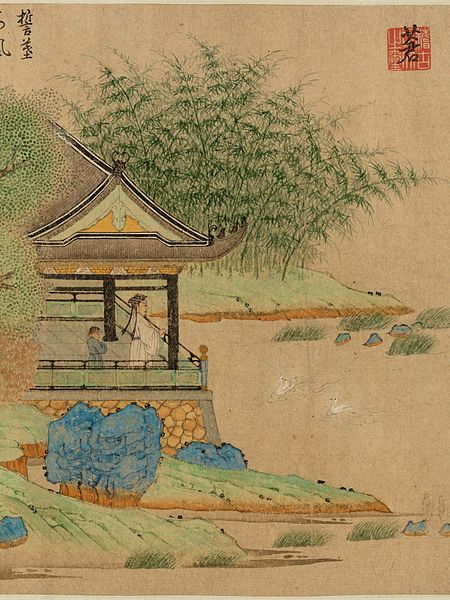The Chinese garden is a landscape garden style which has evolved over three thousand years. It includes both the vast gardens of the Chinese emperors and members of the imperial family, built for pleasure and to impress, and the more intimate gardens created by scholars, poets, former government officials, soldiers and merchants, made for reflection and escape from the outside world. They create an idealized miniature landscape, which is meant to express the harmony that should exist between man and nature.
This picture of the Yuyuan Garden in Shanghai (created in 1559) shows all the elements of a classical Chinese garden – water, architecture, vegetation, and rocks.
A miniature version of Mount Penglai, the legendary home of the Eight Immortals, was recreated in many classical Chinese gardens
The calligrapher Wang Xizhi in his garden, the Orchid Pavilion
The Lake of the Clarity of Gold, an artificial lake and pleasure garden built by Emperor Huizong of Song at his capital, Kaifeng
Taihu, also known as Lake Tai or Lake Taihu, is a lake in the Yangtze Delta and one of the largest freshwater lakes in China. The lake is in Jiangsu province and a significant part of its southern shore forms its border with Zhejiang. With an area of 2,250 square kilometers (869 sq mi) and an average depth of 2 meters (6.6 ft), it is the third-largest freshwater lake entirely in China, after Poyang and Dongting. The lake contains about 90 islands, ranging in size from a few square meters to several square kilometers.
Lake scenery at Wuxi
View from the water's edge
Shore of Lake Tai in Wuxi's Three Kingdoms Park
Lake scene at Wuxi








